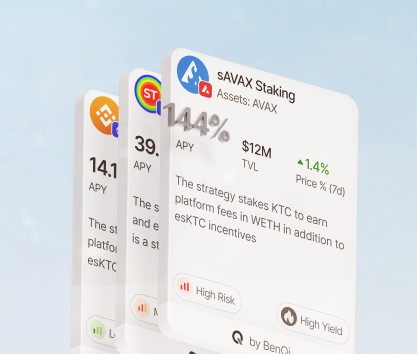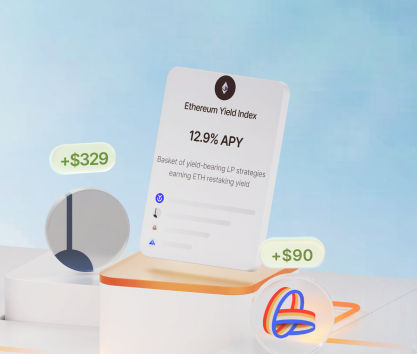With the current diversity of investment instruments in the DeFi ecosystem, coming up with a vision of a robust strategy that can deliver respectable returns that beat what the tradfi can offer is quite difficult. While many outstandingly lucrative and reliable options exist in the decentralized finance sector, unfamiliar risks and the novelty of many protocols can confuse a newcomer.
Building a balanced DeFi investment strategy is a Herculean task for many crypto enthusiasts who enter the world of DeFi while having little to no experience. We want to give you a rough outline of a plan that you should stick to if you are interested in creating a sound financial plan that will lead you to wealth.
In the guide below, we are covering the basics and explaining to you the ABCs of DeFi investing with some practical examples and interesting facts.
Your step-by-step DeFi guide
The sequence of suggestions in the guide is designed to inform a complete newbie about the potential pitfalls of the DeFi sector and the necessary knowledge they must have to make informed decisions. Get ready to take notes!
Step 1: learn about the decentralized finance ecosystem
Up to 33% of all crypto holders don’t know much about their assets. To them, these are digital baubles that can be exchanged for fiat further down the road. However, many tokens are useful instruments that can be actively used. Learning the ABCs of smart contracts, liquidity pools, yield farming options, and staking can be liberating and reassuring.
Security is another important issue with up to 60% of all surveyed DeFi users in the DeFi Safety report saying that they suffered tremendous financial damage due to the lack of basic knowledge.
Step 2: DeFi investment planning is important
Setting up achievable goals for your strategy is the next step. Many enthusiasts believe that venturing into the deeps of the DeFi world is unnecessary if you don’t plan to beat what the tradfi economy can offer. The current US Treasury bond yield for a 2-year investment is 4.27%. High-yield bank accounts provide a roughly 4.5% APY with up to 5.11% in some institutions.
It is true that you should be aiming to beat these numbers. However, calculating your outcomes can be difficult with the way the crypto industry operates. The impact of market trends on investment decisions can be huge! For instance, staking Ethereum directly yields roughly 4% with a chance to go up to 15% in some scenarios. However, the price of the asset against fiat reference must be considered.
Step 3: meticulously contemplate your risk tolerance
One of the reasons many institutional investors tried to avoid allocating capital to the crypto sector is the high volatility of most assets. Bitcoin is one of the most reliable digital assets in the ecosystem yet its average annual volatility is roughly 47% while the S&P500 had an average 10-year annual volatility close to 17.93%. Risking your life savings without properly understanding all the risks associated with the DeFi sector is a bad idea.
We strongly believe that some risk management strategies can be used to reduce the potential danger to your portfolio. However, you should understand the difference between certain digital assets. For instance, stablecoin pools produce more consistent results and should form the bulk of your holdings with roughly 25% — 40% dedicated to so-called blue-chip tokens.
Trying to find the sweet spot for your risk level and avoiding the seduction of high-risk premiums can be challenging even for investors with rich experience in financial markets.
Step 4: diversification in decentralized finance
Focusing on the correct allocation of investable capital should be your top priority. Each of the projects that you can invest in carries a certain level of risk. A crypto investor must focus on using multiple DeFi protocol evaluation methods to identify good targets for investment and spread their money across several good-looking options.
Here’s an example of where you can park your funds:
- Lending protocols, such as Aave with its $19.9 billion TVL and JustLend on Tron with a TVL of $4.7 billion, can be safe and reliable investments with USDT pools on Aave and Tron paying 6.56% and 9.32% APY respectively.
- DEXes are slightly riskier options but the level of danger can be adjusted by investing in specific liquidity pools that do not expose you to excess risks. For instance, the WBTC-WETH pool on Uniswap offers up to 17.28% base APY.
- Yield farming is associated with higher risks but premiums here can be very lucrative. A good example is the current USUALX pool on Pendle with limited maturation that has a massive 148% APY. Another good one is the WETH-AIOZ pool on Convex Finance with a 111% reward APY paid in CVX.
It is a good idea to split your funds across protocols with different levels of risks and potential rewards to ensure that you won’t be crushed by a catastrophic failure of any of the protocols you decide to bet on.
Contemporary DeFi investors have access to a wide range of different instruments that significantly improve QoL or add value by simply existing. To enhance the efficiency of your investment operations and achieve consistency, we strongly recommend using platforms that can elevate your experience as an investor.
A good example of such an investment automation tool is Rivo. The platform has one of the best multi-chain wallets that can easily interact with a wide range of DeFi protocols. You can also invest in a variety of strategies created by industry-leading experts.
Here are some of the options:
- You can simply invest in the Base Yield Index with a solid 18.7% weekly APY instead of focusing on diversification.
- The USDT Lending Market pool with a respectable 8.4% APY is a solid choice for users interested in reliable investing strategies.
- If you are after higher risk premiums, take a closer look at the Ethena rsENA Fixed Yield option offered through Pendle with its 60.9% APY.
By employing these strategies, you can create a balanced portfolio that will perform under all sorts of market conditions.
Step 6: be ready for anything regarding regulation
While it is hugely important to focus on risk management in DeFi and look for profitable investment options that look reliable and trustworthy, remembering your debt to the country you live in is imperative simply because they can lock you up if you aren’t.
Consult with a knowledgeable lawyer about the risks associated with engaging in financial operations within the DeFi sector. Ask whether you need to pay special taxes or follow specific rules. For instance, several recent moves of the US SEC disrupted the ecosystem and made many investors rethink their practices regarding the DeFi ecosystem. Tax implications of investing in DeFi can be hugely impactful!
The main takeaway
After forming a solid portfolio, you have to stay focused and make sure that you adjust and rebalance when necessary. Constantly monitoring the market and adapting to changing circumstances can be tiring. However, the potential reward is lucrative enough to convince many to join the decentralized finance sector!









